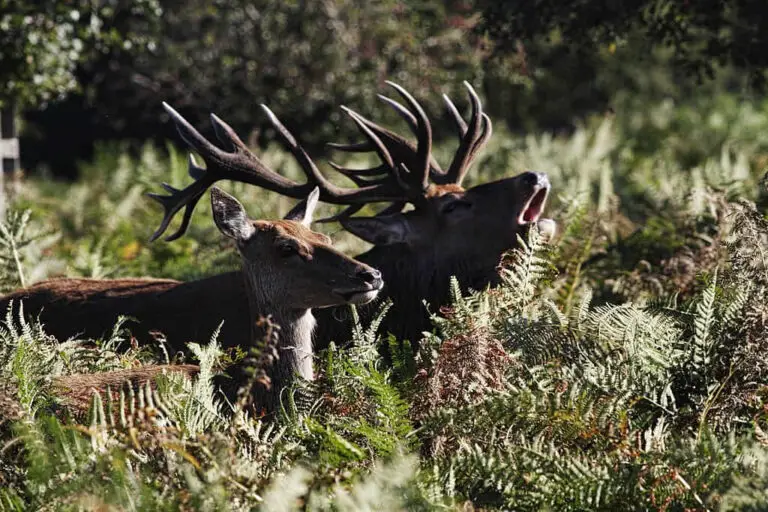
Removing dried hide from a deer skull can be a bit challenging, but with patience and the right tools, it can be done effectively. Here’s a step-by-step guide on how to remove dried hide from a deer skull:
Materials You’ll Need:
- Deer skull with dried hide
- Bucket or plastic container
- Water hose or access to running water
- Safety goggles
- Rubber gloves
- Utility knife or scalpel
- Wire or coat hanger
- Plastic sheet or tarp (to protect your work area)
- Bleaching agent (hydrogen peroxide or household bleach) – optional
- Soft-bristle brush (a toothbrush works well) – optional
- Timer or clock – optional
- Clear sealant or lacquer – optional
Safety Precautions:
- Ventilation: Work in a well-ventilated area to minimize exposure to any odors.
- Protection: Always wear safety goggles and rubber gloves when working with sharp tools.
- Children and Pets: Keep children and pets away from the work area.
- Clothing: Wear old clothes or an apron to prevent staining.
Step-by-Step Guide: How To Get Old Hide Off The Skull?
1. Prepare Your Work Area:
- Lay down a plastic sheet or tarp to protect the surface you’ll be working on. Removing dried hide can get messy.
2. Safety Gear:
- Put on safety goggles to protect your eyes and rubber gloves to shield your hands from any sharp edges and potential contaminants.
3. Soak the Skull:
- Fill a bucket or plastic container with warm water. Submerge the entire deer skull, ensuring that the dried hide is fully covered. Allow it to soak for several hours or overnight.
4. Scrape Off Loose Hide:
- After soaking, the dried hide should start to soften. Use a utility knife or scalpel to carefully scrape off any loose or softened hide. Begin with gentle strokes to avoid damaging the bone.
5. Wire or Coat Hanger:
- A wire or coat hanger can be useful for reaching into crevices and hard-to-reach areas of the skull. Bend it into a shape that helps you access these areas without damaging the bone.
6. Repeat Soaking and Scraping:
- If needed, repeat the soaking and scraping process until you’ve removed as much dried hide as possible. Patience is key, as this step may take some time.
7. Optional: Bleaching (for Cleaning and Whitening):
- If you want to clean and whiten the skull, you can follow the bleaching process mentioned in previous responses. This step is optional but can enhance the appearance of the skull.
8. Rinse Thoroughly:
- Rinse the skull thoroughly with a water hose or access to running water to remove any residue from the hide or bleaching agent if used.
9. Dry the Skull:
- Pat the skull dry with a clean cloth or towel. Allow it to air dry completely, which may take a few days.
10. Optional: Apply Sealant or Lacquer: – Once the skull is dry, you can apply a clear sealant or lacquer to protect it and give it a glossy finish, if desired.
Removing dried hide from a deer skull requires careful and methodical work, especially to preserve the bone’s integrity. Following these steps should help you successfully clean the skull for display or artistic purposes.
12 More Ways To Clean A Deer Skull Effectively
Cleaning a deer skull can be done using various methods, depending on your preferences and the resources available. Here are several ways to clean a deer skull:
1. Boiling:
- Boiling is a common and effective method for cleaning a deer skull. Here’s how:
- Remove as much flesh and tissue as possible from the skull.
- Submerge the skull in a large pot of water and bring it to a boil.
- Allow it to simmer for about 60-90 minutes or until the remaining tissue becomes loose.
- Use a knife or scalpel to gently scrape off the softened tissue.
- Repeat the process as needed until the skull is clean.
2. Maceration:
- Maceration is a natural decomposition process that involves soaking the skull in water to allow bacteria to break down the tissue. Here’s how:
- Submerge the skull in a container of water and leave it outdoors or in a well-ventilated area.
- Change the water every few days to prevent foul odors.
- Over several weeks to months, the tissue will break down, and you can remove it easily.
3. Dermestid Beetles:
- Dermestid beetles are tiny scavengers that can efficiently clean a skull. Here’s how to use them:
- Place the skull in a container or enclosure with the beetles.
- Ensure the enclosure has proper ventilation to prevent the buildup of odors.
- The beetles will consume the tissue, leaving the bone clean.
- Afterward, remove any remaining debris and bleach or whiten the skull if desired.
4. Water and Scrubbing:
- For less stubborn tissue, you can soak the skull in water and gently scrub off the tissue using a soft-bristle brush or toothbrush.
5. Hydrogen Peroxide Soak:
- Soaking the skull in hydrogen peroxide (20-40 volume) can help whiten and clean it. Mix the peroxide with water, submerge the skull, and monitor the progress.
6. Bleach Solution:
- Household bleach can also be used to clean and whiten a deer skull. Mix it with water (1:1 ratio) and soak the skull.
7. Burying:
- Burying the skull in soil can accelerate decomposition. Dig a hole, place the skull inside, and cover it with soil. This method may take several months to a year.
8. Enzyme Cleaners:
- Commercial enzyme cleaners designed for skull cleaning can be effective. Follow the product instructions for best results.
9. Freeze-Drying:
- If you have access to freeze-drying equipment, this method can preserve the skull while removing moisture and tissue.
10. Power Washing: – A pressure washer with a narrow nozzle can be used to remove tissue from hard-to-reach areas. Use this method cautiously to avoid damaging the bone.
11. Combination Methods: – You can combine methods, such as maceration followed by beetle cleaning, to achieve thorough cleaning and whitening.
12. Professional Services: – If you’re unsure or prefer not to clean the skull yourself, consider professional taxidermy or skull cleaning services.
Remember to prioritize safety by wearing appropriate protective gear, especially when working with chemicals or sharp tools. Additionally, consider the final aesthetic you want for the skull; some cleaning methods may leave the bone naturally colored, while others may whiten it.
How To Clean A Deer Skull Found In The Woods?
Cleaning a deer skull found in the woods, a process often referred to as European skull mounting or European skull cleaning, is a rewarding and relatively simple DIY project. Here’s a step-by-step guide on how to clean a deer skull:
Safety Precautions: Before you begin, make sure to take necessary safety precautions. Wear gloves and eye protection, and perform the cleaning process in a well-ventilated area or outdoors.
Materials You’ll Need:
- Deer Skull: The skull you found in the woods.
- Large Pot or Container: To boil the skull.
- Propane Burner or Stove: For boiling.
- Bleach: For whitening the skull.
- Large Plastic Tote or Container: For soaking in bleach.
- Water Hose: To clean the skull.
- Wire Brush: For removing tissue and debris.
- Plastic Scraper or Putty Knife: To help remove remaining tissue.
- Dishwashing Liquid: For cleaning.
- Bucket: For rinsing.
- Hydrogen Peroxide: To whiten the skull (optional).
- Rubber Gloves: For handling bleach.
- Protective Eyewear: Safety glasses or goggles.
- Ventilation Mask: Optional, for protection against fumes.
Step-by-Step Cleaning Process:
- Remove Tissue and Hide:
- Start by removing any remaining flesh and hide from the skull. Use a wire brush to scrub away as much tissue as possible.
- A plastic scraper or putty knife can be helpful for scraping off stubborn tissue.
- Be patient and thorough, as this step is crucial to prevent rotting smells later.
- Boil the Skull:
- Fill a large pot or container with water and place it on a propane burner or stove.
- Submerge the deer skull in the water. You may need to do this in parts if the skull is large.
- Bring the water to a boil, and then reduce the heat to maintain a gentle simmer.
- Allow the skull to simmer for 2-3 hours. This will help soften any remaining tissue and allow it to be removed more easily.
- Scrape Off Tissue:
- After boiling, take the skull out of the water and use your wire brush and scraper to remove any softened tissue.
- Be cautious not to damage the delicate nasal bones or other fragile parts of the skull.
- Soak in Bleach:
- Fill a large plastic tote or container with a mixture of water and bleach (1 part bleach to 1 part water).
- Submerge the skull in the bleach solution. Ensure it’s fully covered.
- Allow the skull to soak for a few days to a week. Check it regularly and change the solution if it becomes discolored.
- Bleach helps whiten the bone and disinfect it.
- Rinse and Clean:
- After soaking, thoroughly rinse the skull with a water hose to remove any remaining bleach solution.
- Use dishwashing liquid and a brush to clean the skull, removing any last bits of tissue and debris.
- Rinse it again to ensure it’s completely clean.
- Whiten (Optional):
- If you want to further whiten the skull, you can soak it in hydrogen peroxide (3% solution) for a few hours to a day. Rinse well afterward.
- Final Cleaning:
- Inspect the skull for any remaining tissue or stains. Use a wire brush or sandpaper for touch-up cleaning if needed.
- Drying:
- Allow the skull to air dry completely in a shaded area. Avoid direct sunlight, as it can cause discoloration.
Once your deer skull is clean and dry, you can display it as a European mount or use it for various decorative purposes. Properly cleaned and maintained, it can be a beautiful and unique addition to your decor.






